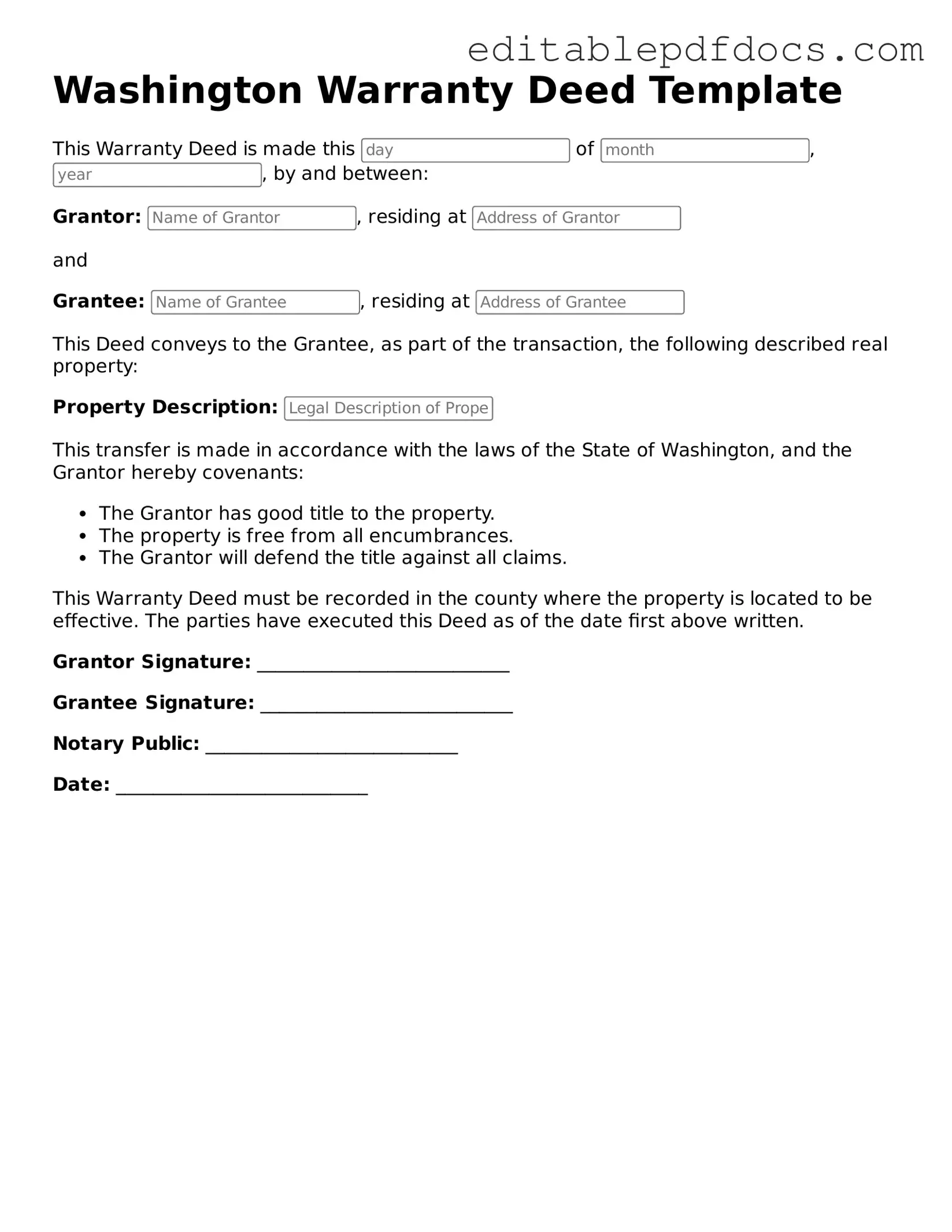Deed Document for Washington
A Washington Deed form is a legal document used to transfer ownership of real estate from one party to another. This essential form ensures that the rights to the property are clearly defined and legally recognized. Understanding how to fill out this form accurately is crucial for a smooth property transaction.
Ready to take the next step in your property transfer? Fill out the Washington Deed form by clicking the button below.
Open Editor Now
